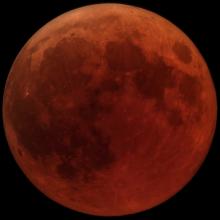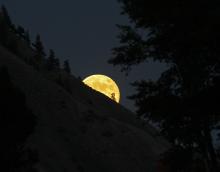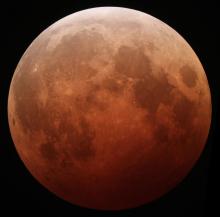Listen to today's episode of StarDate on the web the same day it airs in high-quality streaming audio without any extra ads or announcements. Choose a $8 one-month pass, or listen every day for a year for just $30.
You are here
Harvest Moon
One of the most popular astronomical events of the year happens tonight: the Harvest Moon. It’s the full Moon that’s closest to the autumnal equinox, which is coming up on September 23rd. The actual time of the full Moon is around midnight. That’s the moment the Moon lines up opposite the Sun, so it’ll be fully illuminated by the Sun’s rays.
The Harvest Moon occurs around the end of the growing season for much of the northern hemisphere, so it’s time to harvest the crops — hence the “Harvest Moon” name. But another reason for the name is that the light of the full Moon helps farmers bring in summer’s bounty.
At this time of year, the full Moon rises only 20 or 25 minutes later each night at mid to high northern latitudes — north of about Madison, Wisconsin, or Billings, Montana. In fact, from some latitudes, the Moon can actually rise a bit earlier for several evenings in a row. This gives farmers some extra light, extending the harvest time well into the night.
Over the course of a year, though, the Moon rises an average of about three-quarters of an hour later each day. So if it’s rising only a few minutes later now, it has to make up for that time somewhere else — in this case, around the time of the new Moon. At this time of year, the new Moon rises more than an hour later each day as seen from high northern latitudes. It’s a delay that balances the books on the Harvest Moon — the best-known full Moon of the whole year.






